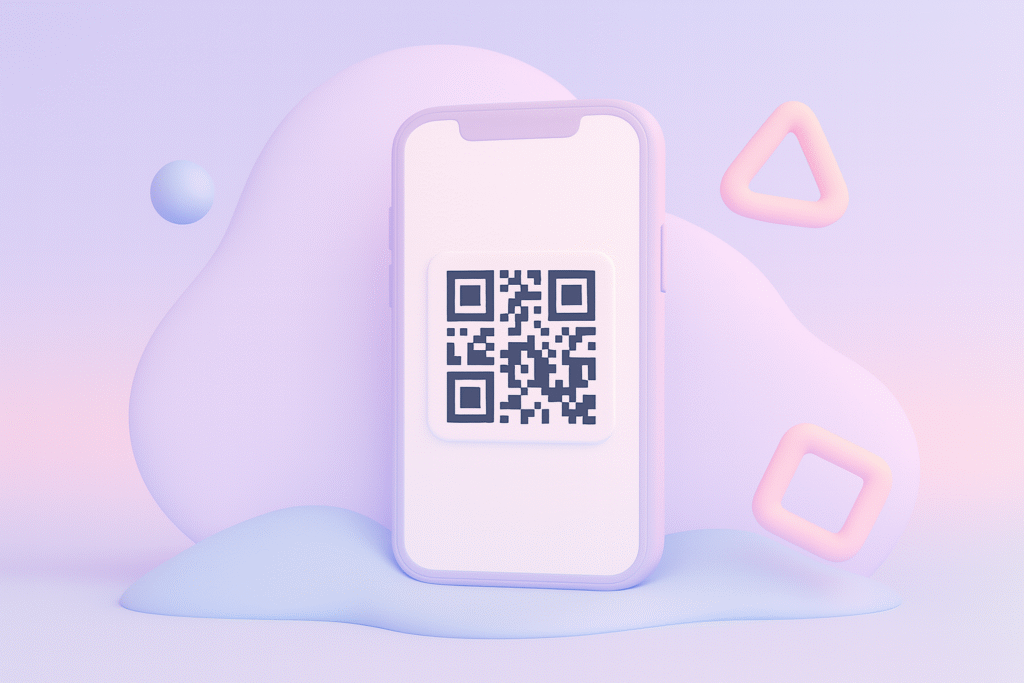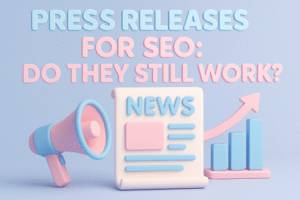From app downloads and mobile payments to event check-ins and product packaging, QR codes are still common and well-integrated in various services.
Major brands still use QR codes for different purposes, like:
- Starbucks – Mobile payments and loyalty program access
- McDonald’s – Contactless menu browsing and mobile ordering
- WhatsApp – Instant contact sharing and group joining
- Netflix – Promotional materials for easy app downloads
- Walmart & Target – Product packaging for additional information and reviews
In fact, 59% of smartphone users still scan a QR code daily, making it still one of the most effective ways to drive app downloads, promote your business, and increase user engagement.
For app developers, marketers, and business owners who aren’t used to QR code integration, they represent a golden opportunity.
They eliminate friction in the user journey, turning a potentially complex app discovery process into a simple scan-and-go experience.
In this comprehensive guide, I’ll walk you through everything you need to know about creating effective QR codes for your mobile apps.
We’ll also explore tools like Bubble for no-code app creation and Capsulink for smooth QR code integration and user analytics.
Benefits of Using QR Codes for Mobile Apps in 2025
The app market is crowded. Millions of apps fight for attention every day, and getting users to find yours in reality isn’t easy.
That’s why QR codes are a game-changer:
- Frictionless downloads – Instead of searching the app store, scrolling, and tapping around, a single scan takes users straight to your app’s page. Less friction = more installations.
- Offline to online – Put QR codes on your packaging, event banners, business cards, or print ads. Restaurants can link menus, retail stores can connect tags to their shopping apps, and seamless transitions from real-world touchpoints to your app.
- Smarter tracking & security – A smart and dynamic QR code generator like Capsulink will let you update links anytime, track scans by location or time, and even add security layers. No need to reprint materials when campaigns change.
- Cost-effective marketing – Once made, your QR code works everywhere: flyers, posters, packaging, social media. It’s one of the most affordable ways to boost app installs, especially for startups and small businesses with little marketing budgets.
How to Create QR Codes for Apps
Creating QR codes for your mobile app doesn’t require technical expertise, but choosing the right method and the right tools can significantly boost your marketing effectiveness.
Let’s explore two popular approaches, each with its distinct advantages.
Method 1: Using Chrome Browser
Chrome’s built-in QR code generator offers you a quick and straightforward solution for basic QR code needs.
Here’s how to use it:
Step-by-Step Process
- Open your Chrome browser and navigate to your app’s download page (App Store or Google Play Store)
- Click on the address bar where your URL appears
- Look for the QR code icon (it appears as a small square with dots) next to the URL
- Click the QR code icon to generate your code instantly
- Download or screenshot the generated QR code
- Use the QR code in your marketing materials
Limitations of Chrome’s QR Code Generator
Chrome’s built-in QR generator is very basic, free, and handy, but it has some major drawbacks for serious app marketing if you are a business user:
- Static only – Once created, you can’t update or change where the QR code redirects.
- No analytics – You won’t know how many people scanned it, when, or from where.
- No user insights – No data on demographics, devices, or behavior.
- No conversion tracking – Impossible to measure ROI or optimize campaigns.
Key Takeaway: For personal use, it’s fine, but for businesses that need measurable results, this method quickly falls short, so method two is more advisable.
Method 2: Using Capsulink (Professional Solution)
For businesses serious about app marketing, professional QR code platforms like Capsulink offer a more comprehensive solution that goes far beyond a basic QR code generated anywhere.
Step-by-Step Process with Capsulink:
- Sign up for a Capsulink account at capsulink.com
- Navigate to the QR code generator section
- Enter your app’s store URL or create a custom landing page
- Choose your QR code design and branding options (Available on paid plans)
- Configure tracking and analytics settings
- Generate your dynamic QR code
- Download in your preferred format and resolution
Advanced Features and Benefits of Using Capsulink
Capsulink takes QR codes beyond the basics and turns them into real marketing assets:
- Dynamic QR codes – Update links anytime, even after printing. Perfect for changing app stores, updating landing pages, or running A/B tests.
- Detailed analytics – See who’s scanning, where, when, and on what device. These insights help you fine-tune campaigns and understand your audience better.
- Branded short links – Use custom, branded URLs instead of generic ones to build trust and keep your brand front and center.
- Easy integration – With Capsulink’s URL shortening API, you can connect QR code generation directly into your apps and websites for smooth, automated management.
In short, Capsulink lets you create, track, update, and brand your QR codes, making them smarter, flexible, and perfect for any mobile app or marketing campaign.
How to Streamline App Creation with Bubble
Creating your mobile app doesn’t have to involve months of coding and hefty development budgets. Bubble revolutionizes app development by making it accessible to everyone, regardless of technical expertise.
Why Choose No-Code App Development? Traditional app development can take 3-6 months and cost thousands of dollars.
With Bubble’s powerful visual programming platform, you can build sophisticated web and mobile apps in weeks, not months, without writing a single line of code.
Simple Steps to Get Started:
- Sign up at Bubble.io and choose your app template or start from scratch
- Design your interface using Bubble’s drag-and-drop editor
- Set up your database and user authentication systems
- Add advanced features like payment processing, API integrations, and workflows
- Test your app using Bubble’s built-in preview functionality
- Deploy your app and make it accessible via mobile browsers, or wrap it as a native app
Advanced QR code integration: Here’s where the magic happens – Bubble makes QR code integration seamless:
- Build custom QR code scanning functionality using plugins
- Create dynamic landing pages that respond to QR code parameters
- Set up automated workflows triggered by QR code interactions
- Track user journeys from QR scan to conversion within your app
- Integrate with external QR services through Bubble’s API connector
Enterprise-Grade Features: Bubble isn’t just for simple apps – it powers applications used by millions of users worldwide:
- Scalable cloud infrastructure that grows with your user base
- Advanced security features, including SSL encryption and GDPR compliance
- Comprehensive user management and permission systems
- Real-time collaboration tools for team development
The Perfect Combo: Bubble + QR Codes Once your app is deployed on Bubble, you can immediately start leveraging QR codes for user acquisition.
The platform’s flexibility means you can create sophisticated QR-driven experiences, from simple app access to complex marketing funnels that adapt based on scan data.
Best Practices for Using QR Codes in App Marketing
Making a QR code is easy. Making it effective is what really matters. Here are some proven practices to ensure your QR codes actually lead to more installations and engagement:
Smart Placement Matters
- Product packaging – If you sell physical products, packaging is a natural place for app download codes. Customers already using your product are primed to connect deeper through your app.
- Events & networking – Conferences, trade shows, and meetups are perfect QR opportunities. Add them to booth displays, business cards, or presentation slides when attention is high.
- Advertising (print + digital) – Use QR codes in flyers, email campaigns, posters, magazine ads, or even banner ads. They bridge offline and online engagement effortlessly.
- Your website – Many people browse on desktop but want to continue on mobile. A QR code here makes that transition simple.
Test & Optimize
Don’t assume the first version works best. A/B test different landing pages, direct links to app stores, custom landing pages with bonus info, or even incentive-driven pages. With dynamic QR codes (like those from Capsulink), you can run tests without reprinting materials.
Beyond testing, your QR code’s visual design matters too.
For more inspiration, follow:
- Google’s QR Code Design Guidelines for optimal scanning performance
- Check out this comprehensive QR code usability guidelines study by Nielsen Norman Group to understand how visual elements affect scan rates.
Dynamic vs. Static QR Codes
- Static codes = one link, no changes, no data.
- Dynamic codes = update destinations anytime, track scans, and measure campaign performance. For serious app marketing, dynamic codes are the clear winner.
Tip: Dynamic codes also pair well with your email campaigns. Imagine sending a QR code in your newsletter to drive instant downloads. If you’re still building your list, check out this guide on how to build your email list fast.
Future Trends: Where QR Codes + Apps Are Headed
- AI-powered personalization – QR codes are getting smarter. Future campaigns may adapt in real time, showing different offers or app flows based on who’s scanning and where they are.
- Rise of no-code platforms – With tools like Bubble, as I explained, anyone can build sophisticated applications without coding. This democratization is making app creation faster and more accessible than ever.
- QR + No-code = faster launches – Imagine building your app with Bubble, then instantly deploying QR code campaigns with Capsulink. It cuts down time-to-market and levels the playing field for businesses of all sizes.
- Deeper integrations – Expect future QR platforms to connect directly with CRM, marketing automation, and app tools, giving businesses richer user data and more advanced campaign options.
My Final Thoughts
QR codes aren’t just those black-and-white squares anymore; they’re a powerful integration that can help boost your app downloads and your overall marketing efforts when utilized properly.
The winning combination:
- Nandbox gets your app built fast (no coding headaches)
- Capsulink creates QR codes, tracks users’ scans, and helps to optimize your campaigns
- Together, they turn your idea into a successful reality with more user engagement and revenue
Why this matters for your business: Whether you’re launching a SaaS product, running a local restaurant, or building an e-commerce app, QR codes bridge the gap between your digital vision and real customers finding you.
They work brilliantly in email campaigns, on product packaging, or at events, anywhere your potential users hang out.
Pro tip: Don’t treat QR codes as afterthoughts. When you combine proper analytics, smart placement, and dynamic updating, they become user acquisition machines that actually yield results.
Ready to get started? Here’s your quick action plan:
- Build your app efficiently with Bubble’s no-code platform
- Create trackable QR campaigns with Capsulink
- Watch your download numbers climb
The future of app marketing is already here. Stop overthinking it, start scanning your way to success.








